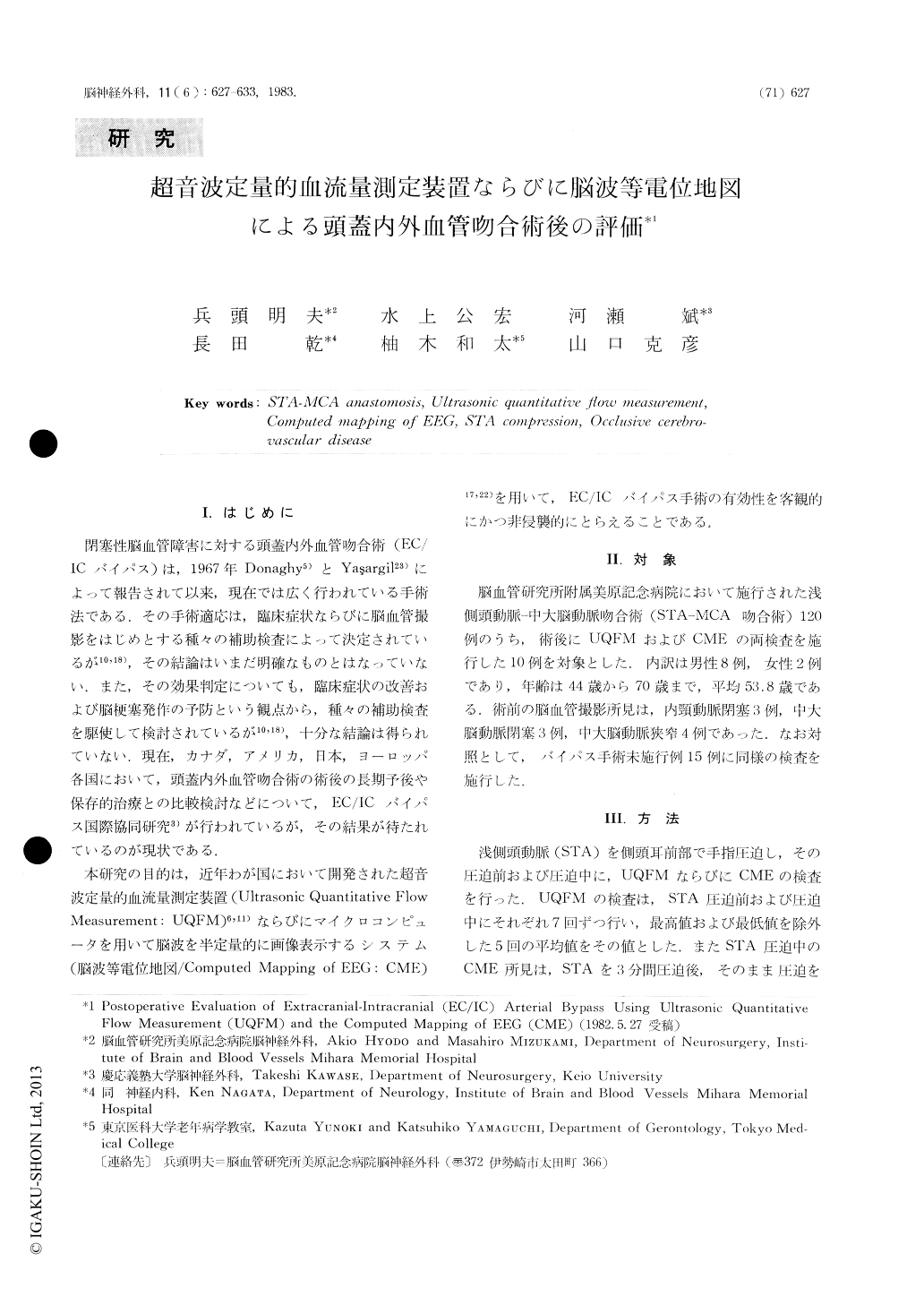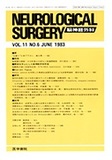Japanese
English
- 有料閲覧
- Abstract 文献概要
- 1ページ目 Look Inside
I.はじめに
閉塞性脳血管障害に対する頭蓋内外血管吻合術(EC/ICバイパス)は,1967年Donaghy5)とYaşargil23)によって報告されて以来,現在では広く行われている手術法である.その手術適応は,臨床症状ならびに脳血管撮影をはじめとする種々の補助検査によって決定されているが10,18),その結論はいまだ明確なものとはなっていない.また,その効果判定についても,臨床症状の改善および脳梗塞発作の予防という観点から,種々の補助検査を駆使して検討されているが10,18),十分な結論は得られていない.現在,カナダ,アメリカ,日本,ヨーロッパ各国において,頭蓋内外血管吻合術の術後の長期予後や保存的治療との比較検討などについて,EC/ICバイパス国際協同研究3)が行われているが,その結果が待たれているのが現状である.
本研究の目的は,近年わが国において開発された超音波定量的血流最測定装置(Ultrasonic Quantitative FlowMeasurement:UQFM)6,11)ならびにマイクロコンピユータを用いて脳波を半定量的に画像表示するシステム(脳波等電位地図/Computed Mapping of EEG:CME)17,22)を用いて,EC/ICバイパス手術の有効性を客観的にかつ非侵襲的にとらえることである.
As an objective evaluation of EC/IC bypass opera-tion, we studied ten patients with occlusive cerebro-vascular disease following EC/IC bypass operation using ultrasonic quantitative flow measurement (UQFM) and the computed mapping of electro-encephalogram (CME). UQFM provides data from which absolute common carotid blood flow can be determined. CME is a system for the two-dimension-al display of equivalent potentials of EEG activities on the scalp using a microcomputer. The equivalent potentials of EEG activity were defined by square roots of average power spectra over a given frequency band.

Copyright © 1983, Igaku-Shoin Ltd. All rights reserved.


